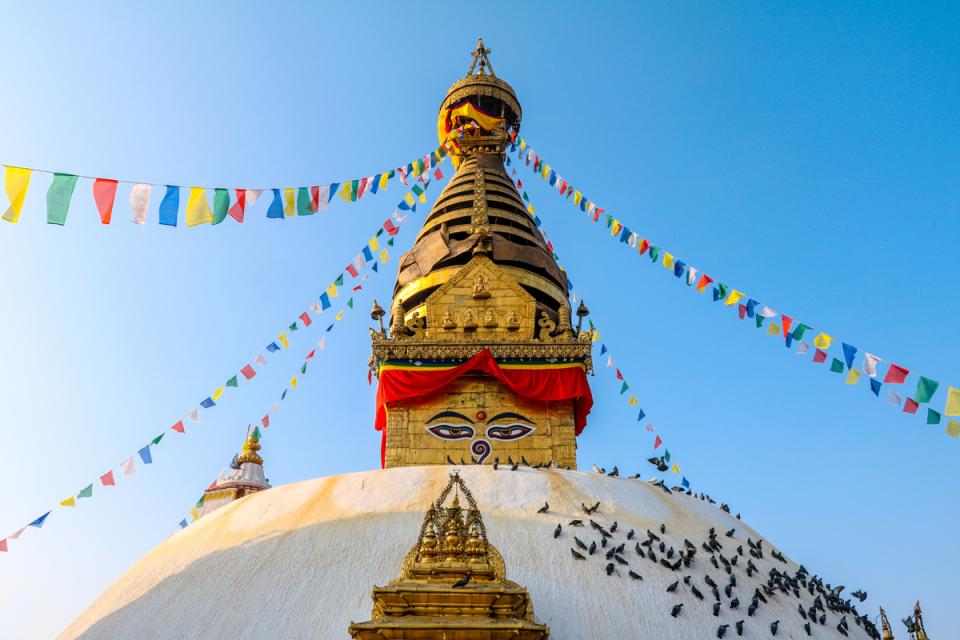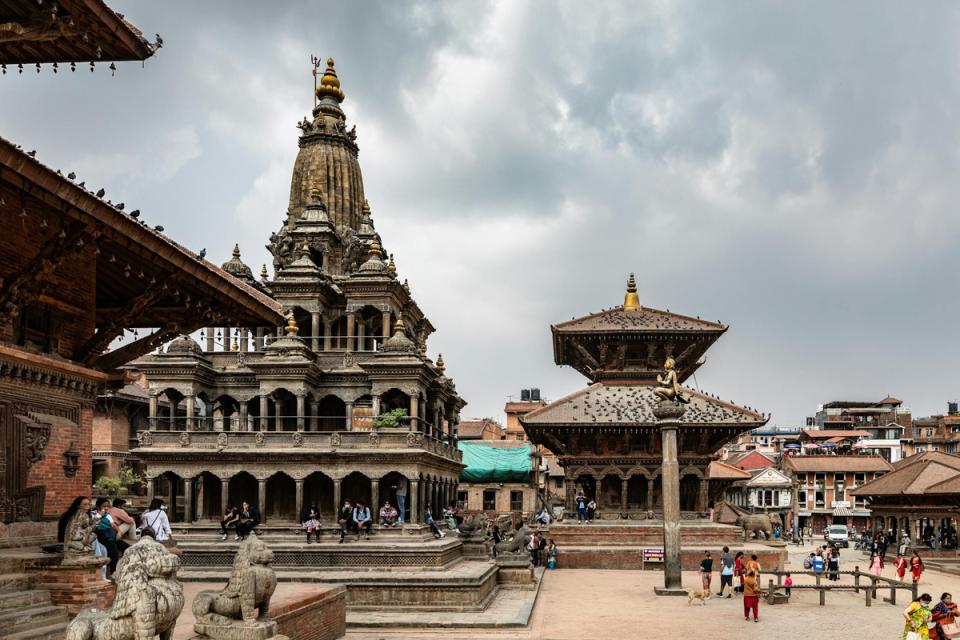Nepal is a land where spirituality and artistry merge seamlessly, creating a vibrant tapestry of culture that captivates every visitor. Among its many treasures, Thangka painting stands out as one of the most mesmerizing and sacred art forms. These intricate scroll paintings are more than just beautiful artworks- they are spiritual windows into Buddhist philosophy, offering rich symbolism and stories that have been carefully preserved for centuries.
For tourists and trekkers, discovering the world of Thangka painting is a chance to connect deeply with Nepal’s heritage. For new learners, it represents a unique opportunity to explore an ancient craft that combines meticulous skill, devotion, and creativity. In this blog, we’ll take you through the fascinating journey of Thangka painting, from its history and spiritual significance to practical tips on learning and buying authentic pieces during your Nepal adventure.
What is Thangka Painting? A Spiritual Canvas
At its core, Thangka painting is a Tibetan Buddhist scroll painting done on cotton or silk appliqué. The word "Thangka" roughly translates to "thing that is unrolled" in Tibetan, referring to its scroll format which can be rolled for easy transport or storage. Traditionally, Thangkas depict Buddhist deities, mandalas (sacred geometric diagrams), religious scenes, or symbols that serve as tools for teaching, meditation, and ritual ceremonies.
The Purpose and Spiritual Significance
Unlike regular art, a Thangka is considered a sacred object and a means to connect with the divine. Each painting is created following strict iconographic guidelines derived from ancient Buddhist texts, ensuring that every symbol, color, and detail aligns with spiritual meaning.
-
Meditative Aid: Monks and practitioners use Thangkas as focal points during meditation to visualize deities and absorb teachings.
-
Educational Tool: These paintings teach complex Buddhist concepts and life stories of enlightened beings.
-
Blessings and Protection: Hanging a Thangka in a home or monastery is believed to bring blessings, protection, and spiritual energy.
The History and Evolution of Thangka Painting in Nepal
The art of Thangka painting has a history that dates back over a millennium. Nepal, located at the crossroads of India, Tibet, and China, played a vital role in preserving and evolving this sacred tradition. The Newar artists of the Kathmandu Valley were instrumental in shaping Thangka painting, blending influences from Tibetan Buddhism and indigenous Newar artistic techniques.
Historical Context
During the 7th century, the spread of Vajrayana Buddhism across the Himalayan region created a fertile ground for Thangka art. The Kathmandu Valley became a renowned center for Buddhist art and culture. Royal patronage and monastic support helped these artistic traditions thrive.
Over centuries, Thangka painting evolved in terms of style, complexity, and technique, with different regions developing unique artistic schools. For example, the Newar style is known for its detailed brushwork and vibrant palette, whereas Tibetan Thangkas often emphasize spiritual symbolism and ritual use.
Materials and Techniques: The Making of a Thangka
Creating a traditional Thangka is a meticulous and time-intensive process requiring mastery and spiritual dedication. It combines artistry with ritual.
The Canvas: Cotton or Silk
Thangkas are painted on specially prepared cotton fabric or silk. The fabric is stretched tightly over a wooden frame and coated with a mixture of chalk and glue to create a smooth painting surface.
Drawing the Design
The artist begins by drawing the image using fine charcoal or pencil lines, often based on precise geometric measurements. The proportions and positioning of figures follow sacred rules laid out in ancient iconography manuals called "Tibetan Buddhist Tantras."
Painting with Natural Pigments
One of the most fascinating aspects of Thangka painting is the use of natural mineral pigments and vegetable dyes. Colors like lapis lazuli blue, cinnabar red, malachite green, and gold powder are mixed with water and animal glue to produce vibrant, lasting hues.
Gold Detailing
Gold leaf or powdered gold is applied in delicate touches to highlight sacred elements, lending both a spiritual and aesthetic richness to the painting.
Mounting and Framing
Once the painting is complete, it is sewn onto a decorative brocade silk frame with wooden dowels, allowing it to be rolled and easily transported.
Learning Thangka Painting: A Path of Devotion and Discipline
For those interested in learning Thangka painting, the journey is as much spiritual as it is artistic. The process teaches patience, precision, and an understanding of Buddhist philosophy.
Who Can Learn Thangka Painting?
Traditionally, Thangka painting was taught within monastic settings or through family lineages of Newar artists. Today, many workshops and art schools in Nepal welcome new learners from around the world - tourists, trekkers, artists, and spiritual seekers.
The Learning Process
-
Study of Iconography: Students first learn the symbolism behind each figure, posture, gesture (mudra), and color.
-
Drawing Practice: Accurate sketching following traditional proportions is essential.
-
Brush Techniques: Mastering brush strokes for intricate lines and shading.
-
Color Application: Learning to mix and apply natural pigments.
-
Spiritual Training: Many workshops incorporate meditation and teachings to deepen understanding.
Where to Learn in Nepal
-
Kathmandu: The cultural hub offers several Thangka painting schools and workshops run by master artists.
-
Bhaktapur and Patan: These historic cities have thriving Newar art communities with authentic studios.
-
Monasteries: Some Buddhist monasteries welcome students to observe or participate in the painting process.
Best Heritage Tour can suggest or arrange you some of the best classes for learning Thangka Painting paired with heritage tour in Kathmandu Valley.
How to Buy Authentic Thangka Paintings in Nepal
For many visitors, buying an authentic Thangka is a cherished souvenir or a meaningful gift. However, due to the growing demand, many reproductions and prints are sold in tourist markets. To ensure you invest in genuine craftsmanship, here are some tips:
Authenticity Tips
-
Material Check: Genuine Thangkas are hand-painted on cotton or silk; avoid printed posters.
-
Pigments: Look for vibrant but natural colors indicating mineral pigments, not synthetic dyes.
-
Detailing: Authentic pieces show fine, intricate brushwork.
-
Artist Signature: Some paintings bear seals or signatures of the artist or workshop.
-
Trusted Dealers: Purchase from reputable galleries or shops with proper provenance.
-
Price Range: Prices vary widely based on size, detail, age, and artist reputation - from affordable small pieces to expensive collector’s items.
Thangka Painting as a Gift: Meaning and Tradition
Giving a Thangka painting is a gesture rich in symbolism. It is commonly gifted during religious festivals, important life events such as births or weddings, or to mark spiritual milestones. The gift symbolizes blessings, protection, and good fortune.
Experiencing Thangka Painting During Your Heritage Tour in Nepal
Nepal offers abundant opportunities to explore Thangka painting first-hand:
-
Visit Workshops: See master artists at work in Kathmandu, Patan, or Bhaktapur.
-
Attend Festivals: Buddhist festivals like Lhosar or Buddha Jayanti showcase Thangkas displayed in monasteries.
-
Visit Monasteries: Boudhanath and Swayambhunath stupas have stunning Thangka collections.
-
Purchase Genuine Art: Support local artisans by buying authentic pieces.
Conclusion
Thangka painting is much more than just art, it's a spiritual expression, a cultural treasure, and a bridge connecting ancient traditions with modern life. For travelers and art enthusiasts, learning about or experiencing Thangka painting in Nepal offers a unique insight into the Himalayan world’s soul. Whether you choose to learn the craft, buy an authentic piece, or simply admire these masterpieces, Thangkas are windows to Nepal’s heart and heritage.
Plan Your Cultural and Artistic Tour with Best Heritage Tour
Dive deep into Nepal’s artistic heritage with Best Heritage Tour. Our expert guides and thoughtfully designed itineraries take you beyond sightseeing to genuine cultural experiences including:
-
Hands-on workshops on Thangka painting
-
Visits to artisan communities and ancient monasteries
-
Opportunities to meet and learn from master artists
Contact us today to start your journey:
Phone/ Viber/ Whatsapp: +977- 9851149197
Email: info@bestheritagetour.com
Website: www.bestheritagetour.com
Author: Best Heritage Tour
Date: 17th June, 2025





